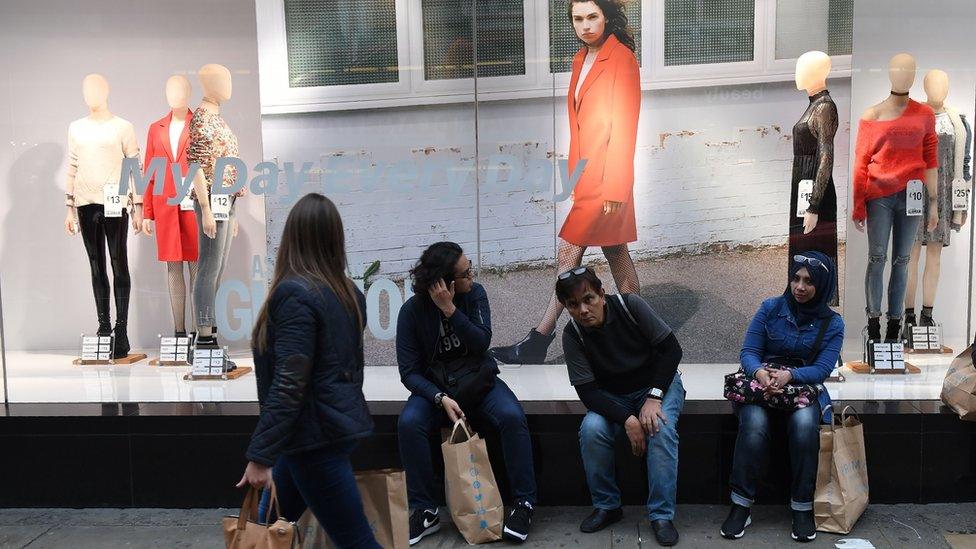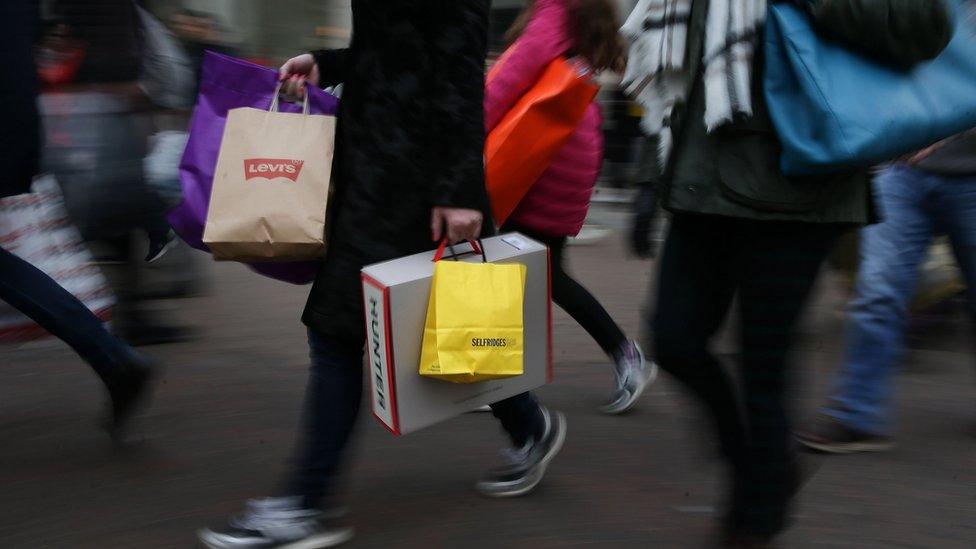A case of less is more for retailers
- Published
- comments

The sound of retailers' hooves galloping out of town seems deafening at the moment.
Marks and Spencer has joined House of Fraser, New Look, Toys R Us, Prezzo, Byron, Mothercare, and Maplin in the roll call of names that either gone bust or taken an axe to their store network.
According to chartered surveyors' trade body RICS, demand for retail property has fallen to its lowest level since the depths of the financial crisis in 2009.
It's not hard to see why. Spending has moved online, favouring retailers with a small physical presence that enjoy lower business rates and lower bills for retail staff whose pay has been supported by a rising national minimum wage.
How can M&S get back in fashion?
Companies that are soldiering on are reducing their rent bills through a controversial insolvency process called a CVA, which gives landlords a stark choice: either take a big cut in rent - or see their tenant go bust.

This is a trend that has angered Next, which claims the practice amounts to good retailers subsidising bad ones.
It wants to insert a "CVA clause" in its own rent agreements so that it enjoys the same rent cuts as any neighbouring retailer with the same landlord.
If it is successful in negotiating that, it would be a very dangerous precedent for retail landlords that are already suffering losses.
It's not impossible to make money in retail, but it's hard if you only have physical stores.
Next itself has optimised its mix of clicks and bricks to produce profits of £750m a year. And remember, M&S still makes more than £500m a year despite being late, and initially clumsy, with its online offering.
Some new kids on the block, such as clothing retailer Quiz, see value in having a physical footprint to keep its brand in shoppers' minds - and even the arch disrupter Amazon is trialling physical stores.
But these forays are not nearly enough to offset a retail space race where less is now more.